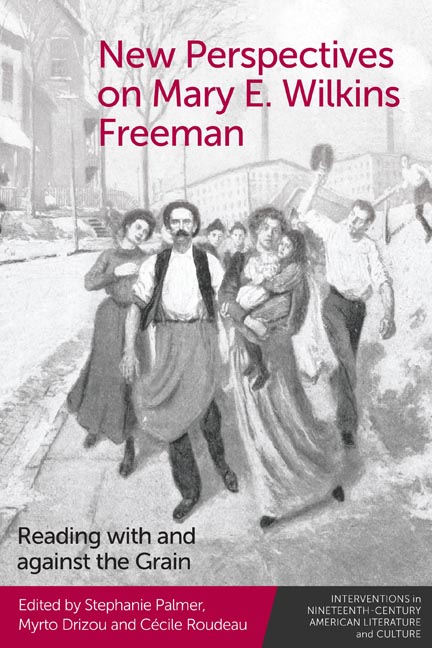Book contents
- Frontmatter
- Contents
- List of Figures
- Acknowledgments
- Contributors
- Reading Freeman Again, Anew
- Part I Kinship Outside of Normative Structures
- Part II Violent, Criminal, and Infanticidal: Freeman’s Odd Women
- Part III Women’s Work: Capital, Business, Labor
- Part IV Periodization Reconsidered
- Afterword: Why Mary E. Wilkins Freeman? Why Now? Where Next?
- Index
3 - “Preposterous Fancies” or a “Plain, Common World?” Queer World-Making in Mary E. Wilkins Freeman’s “The Prism” (1901)
Published online by Cambridge University Press: 20 October 2023
- Frontmatter
- Contents
- List of Figures
- Acknowledgments
- Contributors
- Reading Freeman Again, Anew
- Part I Kinship Outside of Normative Structures
- Part II Violent, Criminal, and Infanticidal: Freeman’s Odd Women
- Part III Women’s Work: Capital, Business, Labor
- Part IV Periodization Reconsidered
- Afterword: Why Mary E. Wilkins Freeman? Why Now? Where Next?
- Index
Summary
The short stories of Mary Eleanor Wilkins Freeman hum with the whispered secrets of the young girls who hop, skip and jump across her pages, sniffing flowers, clutching dolls, and fiddling with patchwork. Freeman wrote for and about young girls: her first publication was a collection of children’s poetry and she remained a prolific writer of juvenile literature throughout her career. Yet Freeman’s more adult fiction also regularly evoked the figure of the child, with childhood often portrayed as a site of liberated imagination; child’s play a state of possibility and the child a figure of queer potential.
The term “queer” is—by its very nature—hard to define. Its general use in the nineteenth century implied a strangeness, a deviation from what was considered to be “normal.” Freeman repeatedly uses “queer,” alongside its synonyms “peculiar,” “odd,” “strange,” and “unusual,” when describing particular girls in her writing, her use of the word during non-heteronormative situations of ambiguous sexuality or gender confusion foreshadowing its later signification. By 1913 Merriam-Webster had defined the term as “[a]t variance with what is usual or normal; differing in some odd way from what is ordinary; odd; singular; strange; whimsical; as, a queer story or act” as well as “[m]ysterious; suspicious [and] questionable” and “homosexual.” Such definitions can easily be aligned with the utilization of the term in contemporary queer theory. David Halperin, for example, states that “[q]ueer is by definition whatever is at odds with the normal, the legitimate, the dominant … ‘Queer,’ then, demarcates not a positivity but a positionality vis-à-vis the normative” (62). Likewise, Michael Warner defines queerness as a “thorough resistance to regimes of the normal” (xxvi) and Annamarie Jagose writes that the term is “necessarily relational rather than oppositional,” and that by “refusing to crystallize in any specific form, queer maintains a relation of resistance to whatever constitutes the normal” (98, 99).
Such “regimes of the normal,” this essay argues, are put to task in Freeman’s depiction of childhood.
- Type
- Chapter
- Information
- New Perspectives on Mary E. Wilkins FreemanReading with and against the Grain, pp. 60 - 76Publisher: Edinburgh University PressPrint publication year: 2023



